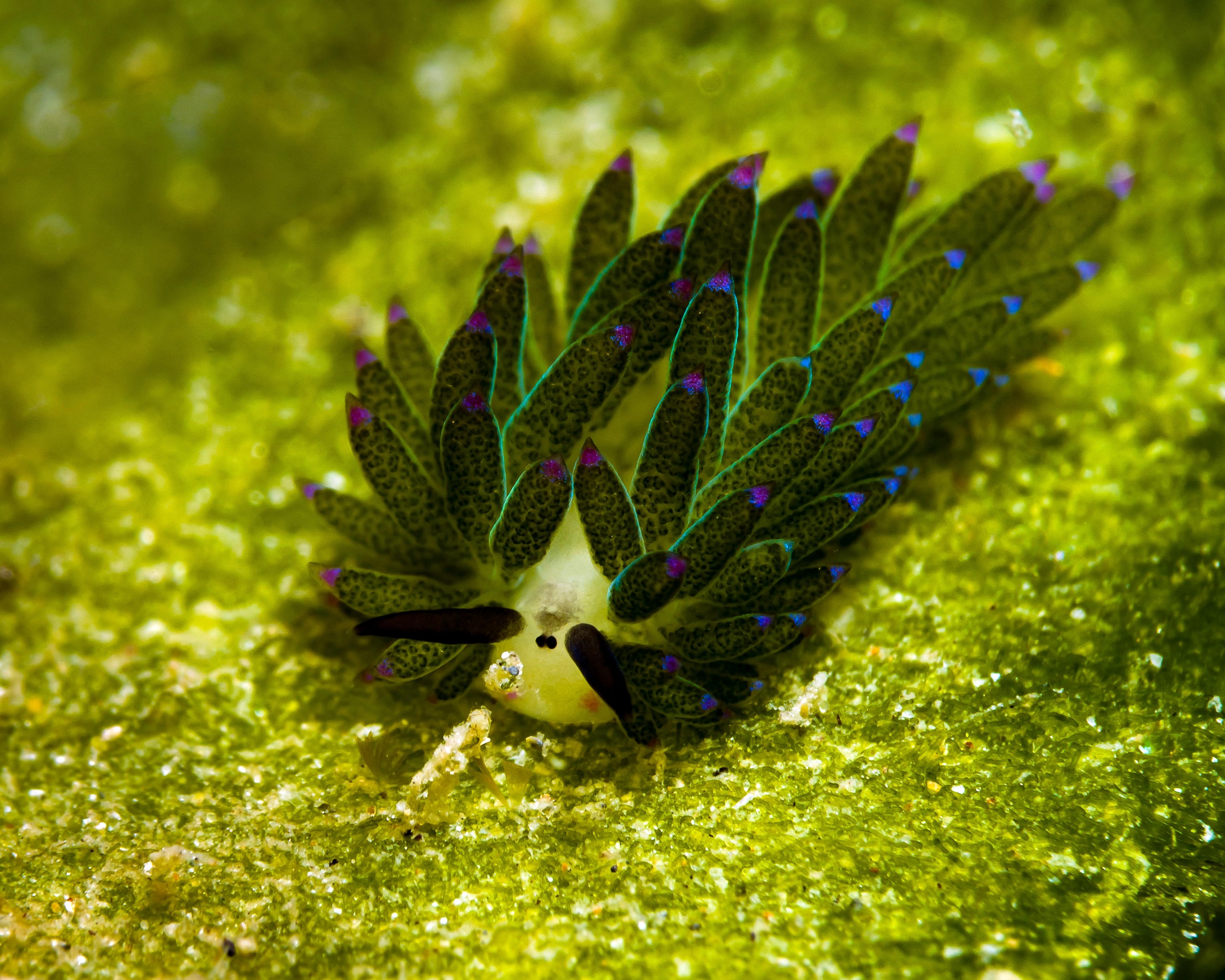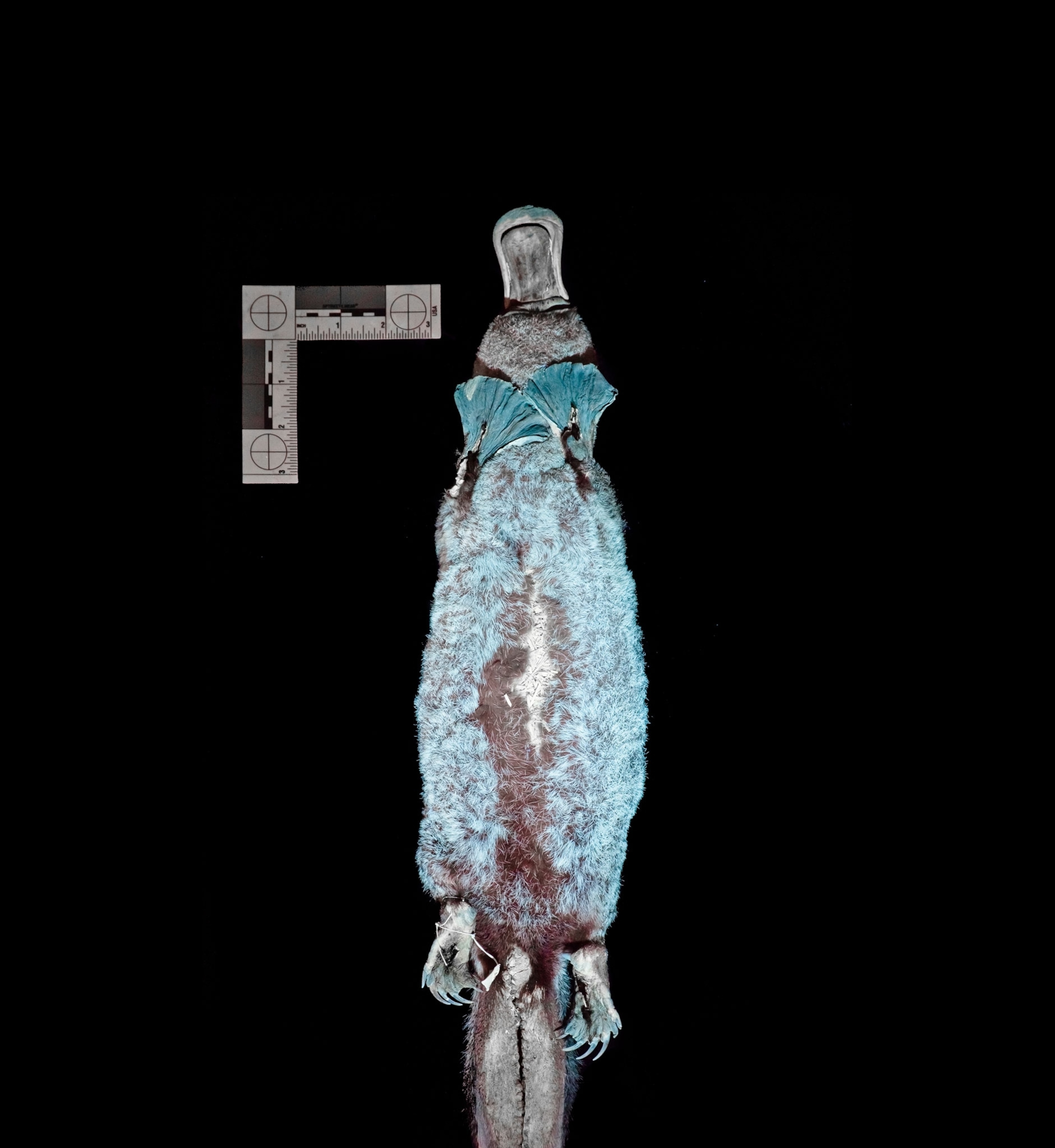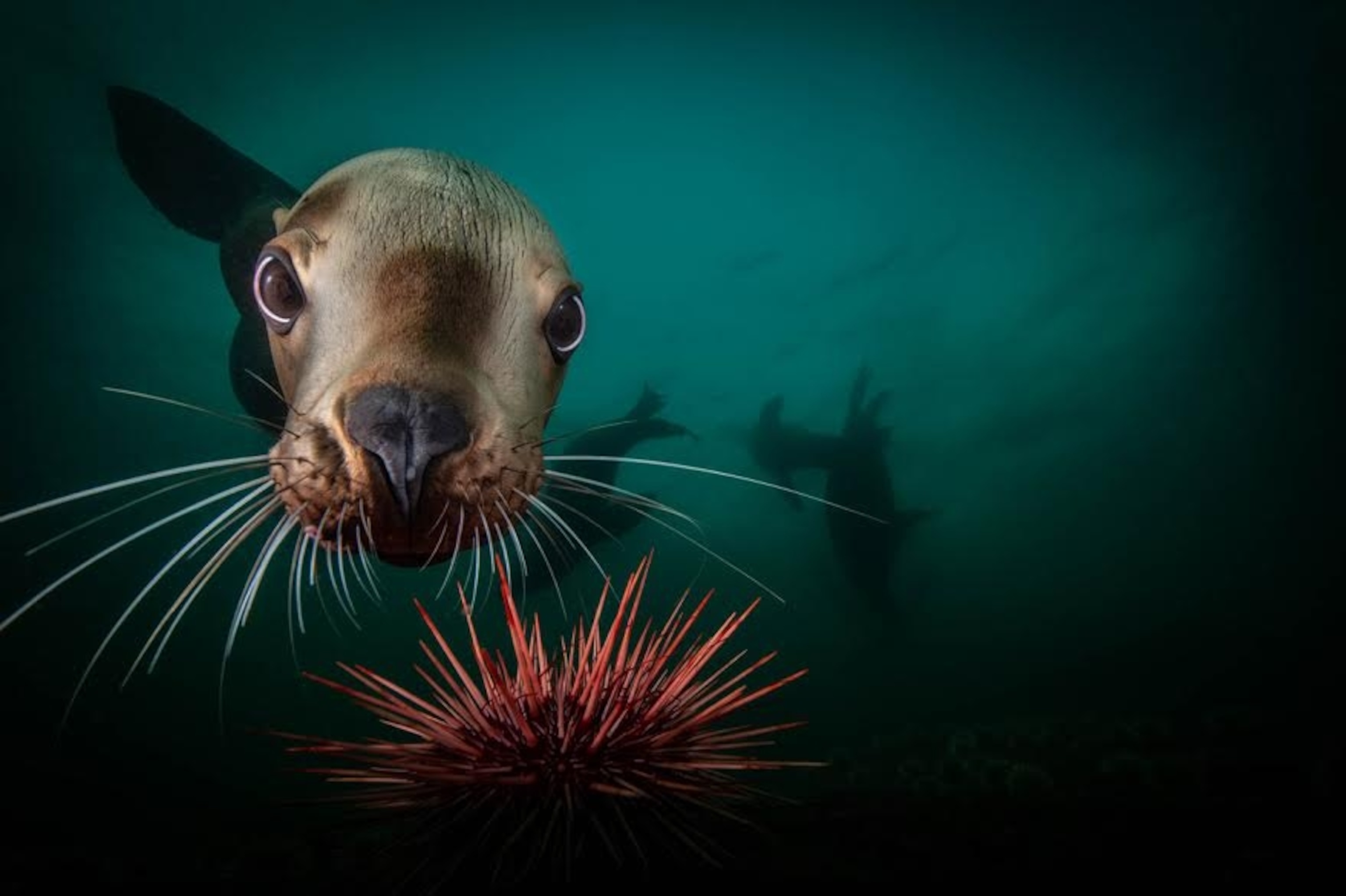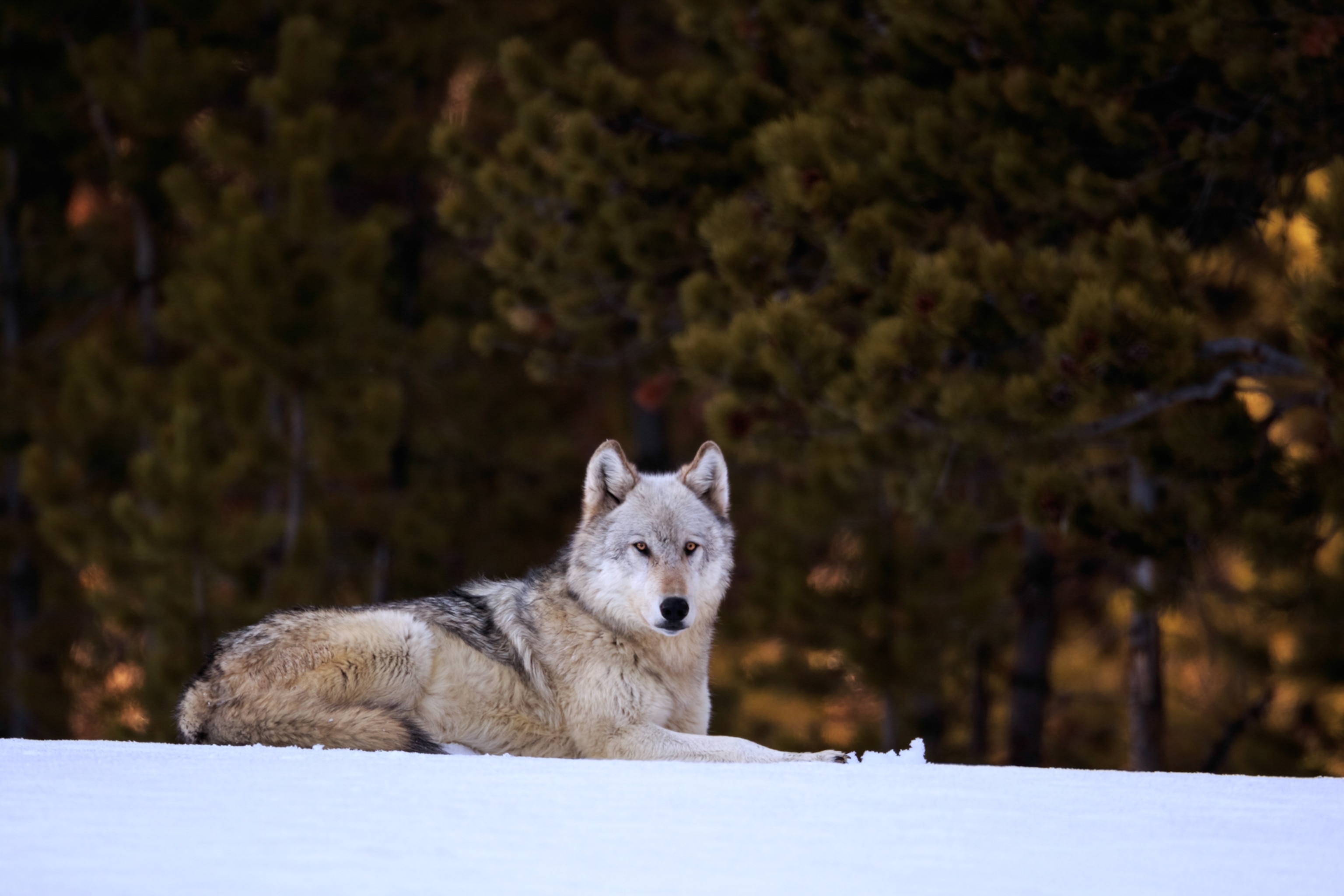
Images to surprise and delight
By Rachael Bale, ANIMALS Executive Editor
Back in May, I asked you all to start sending us your favorite obscure animals. You mentioned some of my favorites, including pangolins and shoebills. But over the months, you’ve also mentioned a number of species I’m barely acquainted with.
I think we’re all at a place right now where we could use a little distraction. So, to that end, I present you with a parade of bizarre, beautiful, and little-known animals (pictured above, an okapi) to help you appreciate the wonder of the natural world. Pick your flavor:
• If you need a smile, try the quokka.
• If you appreciate a good hairdo, check out the Mary River turtle’s mohawk and the mangalitsa pig’s curls.
• If you need to be reminded of the beauty in the world, check out these birds of paradise.
• If you’re feeling sluggish, here’s the sacoglossa. (Pictured below, the Costasiella sapsucking slug.)
• I’m just throwing this one in because it has a great name: The dark-faced ground tyrant.

The natural world never ceases to stun me. I mean, just look at the okapi pictured up top: It’s like someone took pieces of a horse, a zebra, and giraffe and stuck them together, Mr. Potato Head-style. Or this Vietnamese mouse-deer ... with FANGS! Now if you’re still feeling overwhelmed, anxious, or in need of a pick-me-up, just remember: This exists.
Not enough animals for you? Check out our animal photos of the year and images of some of the weirdest animals we've ever seen.
Do you get this newsletter daily? If not, sign up here or forward to a friend.
Today in a minute
From the shelter to the White House: President-elect Joe Biden’s younger German shepherd, Major, will have a major step up come January 20. Major, who spent his puppyhood in a shelter, will be the first shelter dog at 1600 Pennsylvania Avenue. Nat Geo’s Natasha Daly reports that the social media joy over Major reflects America’s growing embrace of shelter dogs—more than 1.6 million dogs were adopted last year, according to the ASPCA. While Major will be the first shelter dog in the White House, he won’t be the first rescue. President Lyndon Johnson’s terrier mix, Yuki, was a rescue that was found by his daughter Luci at a Texas gas station.
Glow on: Animals can see colors that we cannot. Only through a yellow filter can we detect a platypus in all its ultraviolet biofluorescent blue-green glory. (See it below, with its distinctive bill on top, in an image taken from a composite). “I was a little flabbergasted,” says mammalogist Paula Anich, already impressed with the egg-laying mammal’s ability to detect prey at night by using the duck-like bill. Anich made the discovery by accident. Last year, she found that flying squirrels fluoresce under UV light, emitting a pink glow from fur on their bellies. She was looking at squirrel hides at Chicago’s Field Museum when she, out of curiosity, decided to test platypus fur, Nat Geo’s Douglas Main reports.

Katharine the Great White Shark: For the first time in a year and a half, a 14-foot great white with a transmitter made a definitive sound when it surfaced off the East Coast. “Katharine is alive and well,” wrote Bryan Franks of Jacksonville University, part of a team that has followed the Atlantic shark since the transmitter was attached off Cape Cod in 2013. “Katharine pinged in multiple times yesterday, confirming it was not a fluke.” Named for America the Beautiful writer Katharine Lee Bates, the shark has been tracked to the eastern Gulf of Mexico, around Florida, and up the Atlantic to the Grand Banks of Newfoundland, the Guardianreports.
Will you please go now? Botswana says it has too many elephants. Some came from Angola. Botswana wants them to go back. Angola’s civil war drove the mighty animals away, but a few of the elephants have been returning, and both countries are working to encourage that, helping remove landmines left over from the conflict, Bloomberg reports. Even though elephants are big contributors to Botswana’s wildlife tourism industry, they’ve wrecked farmers’ fields and threatened villagers, and poaching has grown, Nat Geo’s Dina Fina Maron has reported.
Pet project: A longtime leader of the impoverished Central Asian nation of Turkmenistan has unveiled a 19-foot gold statue of his favorite dog breed. Gurbanguly Berdymukhamedov already has devoted a book to the Alabay, a home-bred Turkmen variety of the Central Asian shepherd dog. (See the statue here.) An understated BBC dispatch said it was not known how much the statue cost. The nation is ranked 179th of 180 countries in the latest World Press Freedom Indexby Reporters Without Borders (North Korea is No. 180).
Your Instagram photo of the day

Curiosity: A young Steller sea lion was busy investigating the long quills of a sea urchin when it suddenly peered into Cristina Mittermeier’s camera. “His whiskers bristled with bold curiosity, and the creases on his little face furrowed as he leaned in to get a better look at me. I kept as still as I could, delighted by the close encounter,” Mittermeier tells us. Steller sea lions flock to the coast of British Columbia in the spring to wait for the herring’s seasonal return. The first arrivals are often juvenile males who seek out every opportunity to play and stir up mischief. They spend their days tearing gleefully after each other through the icy waters and are known to engage with unsuspecting divers for fun.
The big takeaway

A change in seasons? For migratory birds like the snow geese (pictured above), the last four years saw fewer protections. The U.S. government stopped fining companies that unintentionally killed migratory birds. Many advocates and conservationists hope the incoming U.S. administration will restore those protections—as well as those for other wild, captive, or farmed animals. Conservationists and animal advocates say the Biden administration also could better enforce the Endangered Species Act, keep climate change in mind, and actually follow up on other existing rules to ensure animal welfare, Nat Geo’s Natasha Daly and Douglas Main write.
In a few words
It used to be really like pulling teeth to get someone to introduce a bill and take it seriously. Now, every [lawmaker’s] office has an animal welfare staffer. There’s just more interest and sensitivity to the lives of animals and how important they are to people.Nancy Blaney, Animal Welfare Institute, From Could endangered species and other animals fare better under Biden?
Did a friend forward this to you?
Come back tomorrow for Whitney Johnson on the latest in photography news. If you’re not a subscriber, sign up here to also get Debra Adams Simmons on history, George Stone on travel, and Victoria Jaggard on science.
The last glimpse

Homecoming: For the first time ever, a state’s voters decided to reintroduce an animal into the ecosystem. In the 1940s, gray wolves were hunted, trapped, and poisoned to extinction in Colorado, often with the help of the government. Last week, Coloradans voted to allow a suitable population of the wolves to settle again in the Rocky Mountain state, Douglas Main reports. The vote was close, with opponents fearing the wolves would kill elk and cattle. Advocates point to the successful reintroduction of wolves to the Northern Rockies in the 1990s, where only one in 10,000 cattle in wolf-occupied counties are killed by the predators on average. (Pictured above, a wolf in Yellowstone.)
david.beard@natgeo.com . And thanks for reading.
